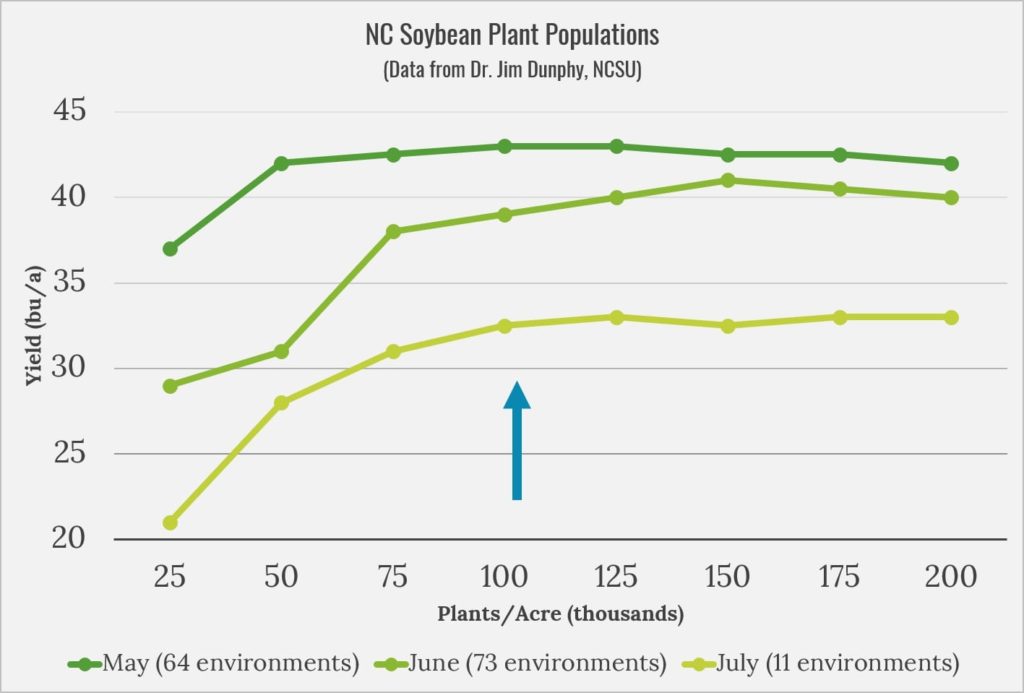Seed is one of the most expensive inputs for soybean growers, so it’s essential to plant the right amount of seed to minimize input costs while still maintaining high yields, especially in years like this year where prices are low, and margins are tight.
Numerous seeding rate studies carried out across the U.S. suggest that the optimal plant population for maximum return on investment is 80,000 to 120,000 plants per acre. We’ll take a deeper look at some of this research below.
First, is work carried out by Dr. Dunphy right here in North Carolina evaluating a wide range of plant populations. In the graph below, notice that there is very little yield difference (especially for the earlier planting dates) in the treatments after you pass 100,000 plants per acre, suggesting there is no value in planting higher populations. This work includes data collected from over 50 different environments but focused on later maturing, determinate varieties.

Next we’ll take a look at some preliminary work carried out by Dr. Rachel Vann and county extension agents on early maturing varieties. This research was conducted last year on maturity group III and IV varieties. Six different seeding rates were evaluated ranging from 60,000 to 160,000 seeds/A. Combining data across locations, soybean yield declined at the lowest seeding rates (60,000 and 80,000) and stabilized at rates greater than 100,000 seeds/A. Yield declines at lower seeding rates were generally more pronounced in high yielding environments. This suggest that even for our earlier maturing indeterminate varieties, shooting for 100,000 plants/A would maximize ROI.

This research demonstrates that soybean plants have the unique ability to adapt and the plants can compensate for a wide range of planting populations. The yield per acre remains relatively constant across planting rates, likely because the seeds produced per plant is inversely related to the number of plants per acre.
However, this graph shows how yield is correlated with plants/acre. When you are deciding how much seed to use, you need to consider the germination rate. We would expect to see poorer seed quality and lower germination in some varieties this year due to adverse weather in 2018. You should check the reported germination for each seed lot and adjust your planting rate accordingly to get the desired number of plants/acre.
So, is a 2 or 3 bushel per acre increase in yield, worth the extra cost of seed? Well, assuming a seed cost of $60 a bag (that’s approximately $0.40 per thousand seed) we can calculate the cost of seed for these populations.

To pay for the cost of going from 100,000 seed/acre to 200,000 you would need to increase yield by 4.3 bu/acre (assuming $10 soybeans). Based on the data collected in North Carolina and across the U.S., we would not expect this may not be a profitable decision.
While reducing seeding rates can help save on input costs, remember to there are times when higher populations may be beneficial (as we saw in our On-Farm research trials). Higher rates are recommended for the following:
- Very early planting
- Late planting (after July 1)
- Low productivity soils
- Planting with a drill
I know many of you are not comfortable going below 100,000 plants per acre, and I’m not suggesting you all do that, as you know your fields best. But I would challenge you to try a seeding rate a little lower than you typically use. This is an easy way to save money in tight economic times without sacrificing significant (if any) yield.







